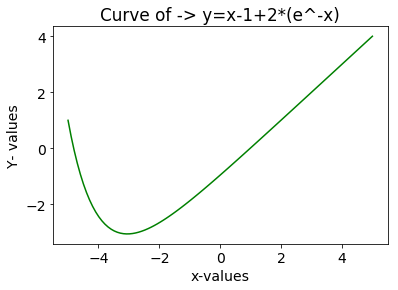SciPy – Integration of a Differential Equation for Curve Fit
Last Updated :
23 Jan, 2022
In Machine Learning, often what we do is gather data, visualize it, then fit a curve in the graph and then predict certain parameters based on the curve fit. If we have some theoretical data we can use curve fitting from the verified dataset to extract the equation and verify it. So to find the equation of a curve of any order be it linear, quadratic or polynomial, we use Differential Equations and then integrating that equation we can get the curve fit.
In Python SciPy, this process can be done easily for solving the differential equation by mathematically integrating it using odeint(). The odeint(model, y0, t) can be used to solve any order differential equation by taking three or more parameters.
Parameters :
model– the differential equation
y0– Initial value of Y
t– the time space for which we want the curve(basically the range of x)
Let’s illustrate this with an example:

Code: To solve the equation to get y = x – 1 + 2 (e^-x) as the solution
python3
import numpy as np
from scipy.integrate import odeint
import matplotlib.pyplot as plt
from scipy.integrate import odeint
def dy_dx(y, x):
return x - y
xs = np.linspace(-5,5,100)
y0 = 1.0
ys = odeint(dy_dx, y0, xs)
ys = np.array(ys).flatten()
plt.rcParams.update({'font.size': 14})
plt.xlabel("x-values")
plt.ylabel("Y- values")
plt.title('Curve of -> y=x-1+2*(e^-x)')
plt.plot(xs, ys,color='green')
|
Output:
This is the graph generated by using the scipy.integrate.odeint( ) which can be seen below and further be used for curve fitting – for analyzing the data in Machine learning.

The Graph generated after integrating the differential equation
Like Article
Suggest improvement
Share your thoughts in the comments
Please Login to comment...